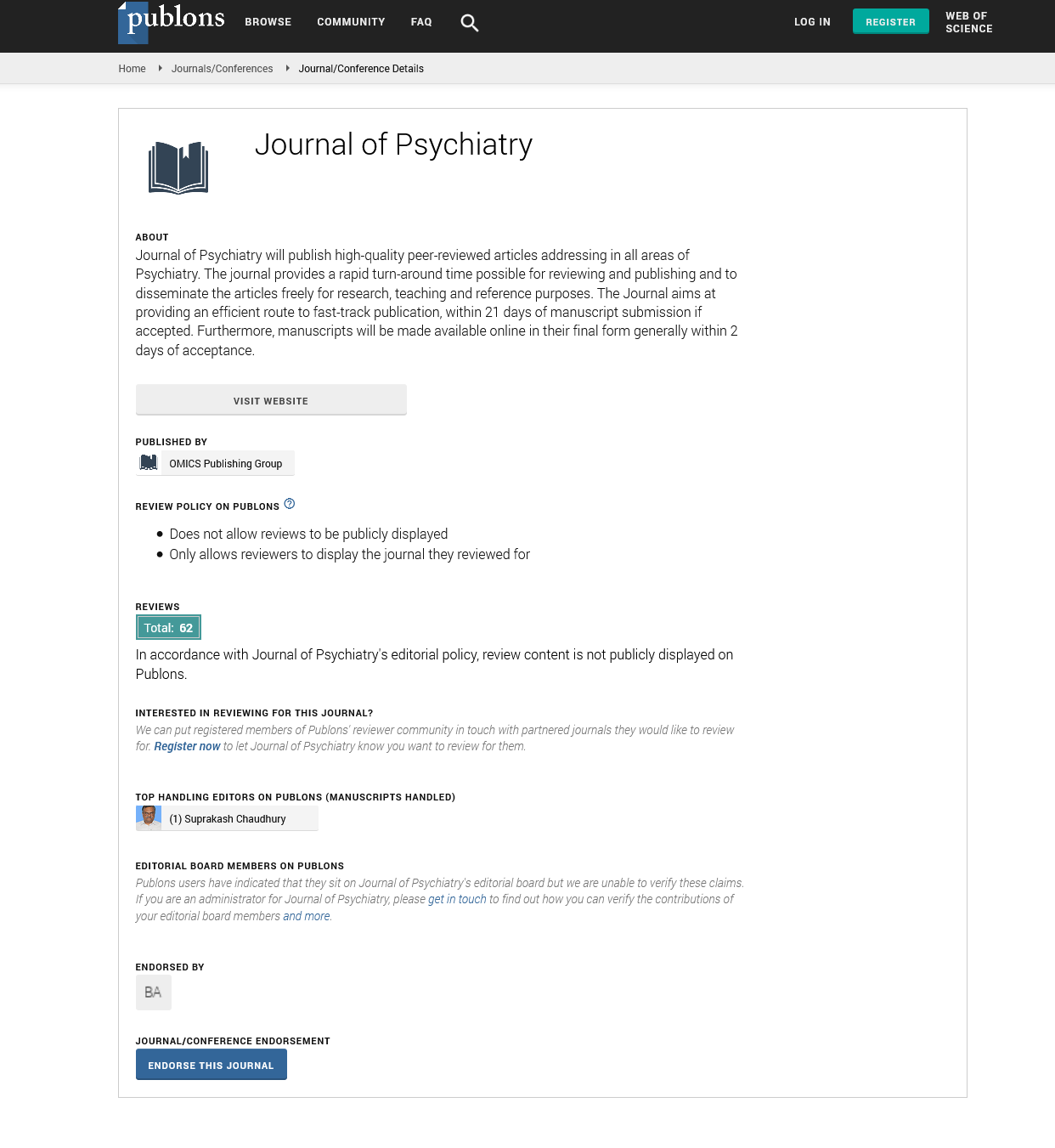Indexed In
- RefSeek
- Hamdard University
- EBSCO A-Z
- OCLC- WorldCat
- SWB online catalog
- Publons
- International committee of medical journals editors (ICMJE)
- Geneva Foundation for Medical Education and Research
Useful Links
Share This Page
Open Access Journals
- Agri and Aquaculture
- Biochemistry
- Bioinformatics & Systems Biology
- Business & Management
- Chemistry
- Clinical Sciences
- Engineering
- Food & Nutrition
- General Science
- Genetics & Molecular Biology
- Immunology & Microbiology
- Medical Sciences
- Neuroscience & Psychology
- Nursing & Health Care
- Pharmaceutical Sciences
Abstract
Management of Chronic Daily Headache with Focus on Botulinum Toxin Type
Nigora Kadyrkhodjayeva
Goal: The purpose of the study was to review the efficacy, safety and tolerability of botulinum toxin A (BTX-A) as a prophylactic treatment in adults with chronic daily headache (CDH).
Material and methods: The study involved 100 patients with CDH comparing between two groups of patients. Group I, 54 patients (31 women and 23 men) treated by BTX-A, and group II, 46 patients (27 women and 21 men) treated with the classical method, with an average age of 35 ± 9 years.
Results: After 3 months headache severity in group I: 2 (3,7%) patients had no changes, 7 (12,9%) patients with less than 50 percent reduction in pain, 23 (42,6%) reported 70 to 95 percent pain relief, and 22 (40,8%) had complete relief. Group II: 12 (26,1%) patients had no changes, 16 (34,8%) patients with less than 50 percent reduction in pain, 10 (21,7%) reported 70 to 95 percent pain relief, and 8 (17,4%) had complete relief. The mean change from baseline frequency of headaches ranged from 3 ± 1 headaches per 30???day period in group I and 7±2 headaches in group II. This enhancement in catalytic performance was, however, more significant in the case of rod-shaped ceria.
Conclusion: In this study, BTX-A injections have been shown to be safe, well ???tolerated, not any treatment-related serious adverse events reported. BTX-A injections recommended optimizing clinical outcomes for patients with CDH without using other prophylactic medications.
Published Date: 2020-08-29; Received Date: 2020-08-05

